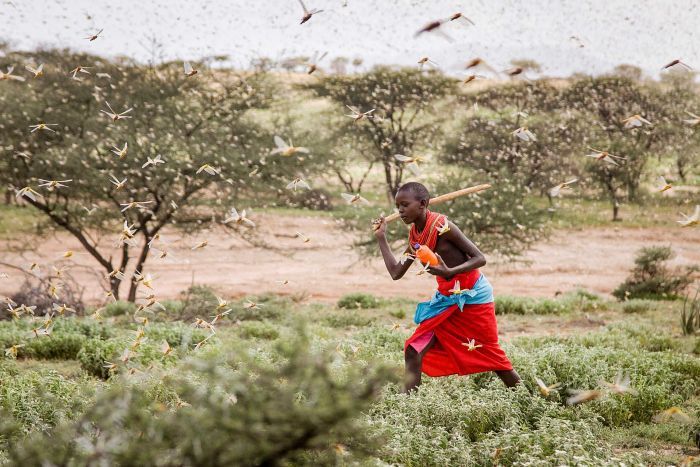Late December 2019, farms in Kenya saw an abundant amount of locust infestation, the swarm of locust has only grown invading several counties around the nation. Counties including Embu, Garissa, Tana River, Marsabit, Wajir, Samburu, Laikipia, Isiolo, Baringo, Turkana, etc.
The United Nations Food and Agriculture Organization says it’s the worst locust infestation Kenya has seen in the last 70 years. Some other countries in East Africa have also seen this plaque such as Somalia and Ethiopia.
The Eastern Africa Desert Locust Control Organization have deployed aircraft to spray the infected areas with the pesticide in order to kill the locust before they spread to their neighbours in Uganda and South Sudan. Aircraft have also been deployed in Ethiopia to administer the pesticide and have been operating since August 2019.
There have been speculations by weather experts that this plague is a result of climate change. Ethiopia, for example, has been experiencing a huge drought and flash flood which began in 2015. The countries that have been infected with the locust infestation have been facing food insecurity, many of the people in the region are underfed and heavily malnourished.
Health care personnel in these regions have complained about the use of pesticide in their attempt to end the plague because the use of pesticide can have adverse effects, they say it might eventually destroy the other sources of food and poison the water supply.
Some people have suggested eating the locust to get rid of them just like they did in Israel. Israel has already experienced a mild locust infestation and instead of using pesticide in an attempt to destroy them they started eating it. According to some people living in Israel, locust is a delicious crunchy healthy snack which has now become a delicacy in the region. They claim the locust is a good source of protein.





